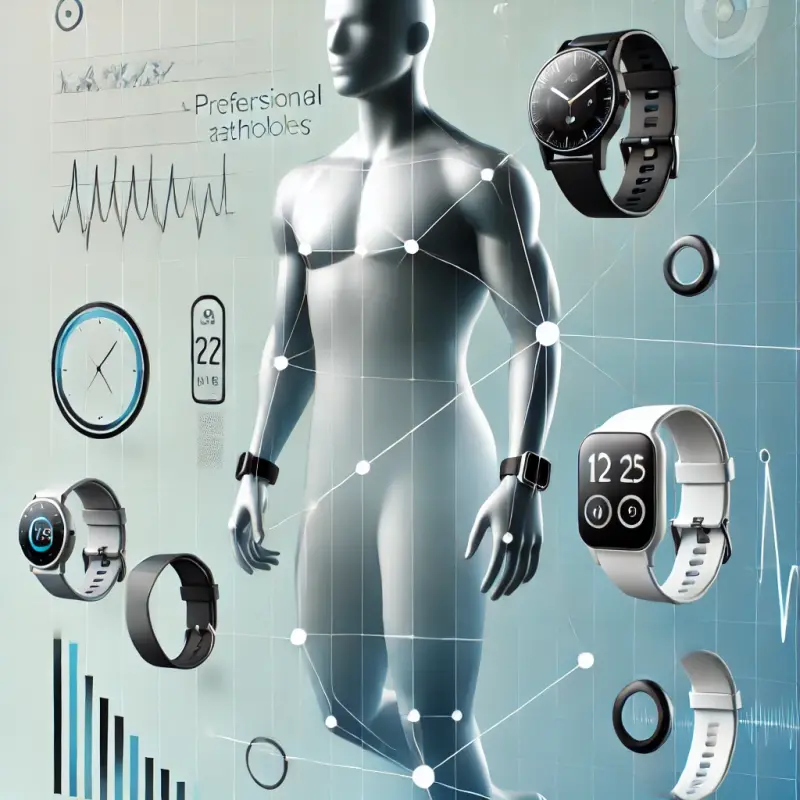Forecasting the Future of Wearable Gadgets in Professional Sports: Enhancing Training and Performance
Wearable technology has established itself as a cornerstone in modern sports, driving innovations that reshape how athletes train, recover, and perform. These devices provide athletes with valuable insights into their physiological and biomechanical states, allowing for informed decisions that maximize performance potential. As technological advancements continue, the future of wearable gadgets in professional sports promises even greater enhancements, addressing the demands of elite training and competition environments.

Current State of Wearable Technology in Sports
Wearable technology in sports today is centered on tracking, monitoring, and analyzing performance metrics. Devices such as smartwatches, chest straps, and performance vests are ubiquitous among professional athletes. These tools track heart rate, step count, speed, distance, and even complex metrics like workload and recovery rates.
Wearables have transformed how coaches and athletes approach training. Real-time data enables immediate adjustments during sessions, optimizing the effectiveness of each exercise. Furthermore, devices like GPS-enabled vests provide detailed analytics on movement patterns, helping to refine techniques and strategies.
Another critical application is injury prevention. By identifying trends in an athlete’s workload, wearable technology can signal when the risk of overtraining or injury is high. This proactive approach has made wearables indispensable in professional sports.
Emerging Trends and Predictions
The next wave of wearable technology is expected to incorporate groundbreaking innovations. These advancements promise to make training more personalized, efficient, and safe.
Advanced Biometric Sensors
Future wearables will delve deeper into physiological monitoring. Metrics like hydration levels, muscle oxygenation, and metabolic rates will soon be trackable through non-invasive sensors. This detailed data will help athletes maintain optimal physical conditions, minimizing risks related to dehydration or fatigue.
Artificial Intelligence Integration
The integration of artificial intelligence with wearable technology is set to revolutionize data analytics. AI algorithms can analyze vast datasets generated by wearables to predict trends, such as fatigue buildup or injury likelihood. This predictive capability allows athletes to address issues before they escalate, ensuring continuous performance improvements.
Enhanced Real-Time Feedback
Immediate feedback during training is crucial for making adjustments on the fly. Wearables of the future will offer augmented reality interfaces or haptic feedback mechanisms, providing athletes with instant insights without interrupting their routines.
Miniaturization and Comfort
Design innovations will focus on making wearable devices smaller, lighter, and more comfortable. For example, biometric monitoring rings and adhesive sensors represent the shift toward less intrusive yet equally powerful technologies. This evolution ensures athletes can wear devices for longer periods without discomfort.
Data Security and Privacy
As wearables collect sensitive data, ensuring its security will become paramount. Future devices will feature advanced encryption and data management systems to safeguard athletes' privacy.
Benefits for Professional Athletes
The integration of wearable gadgets into professional sports offers numerous advantages that directly impact training and performance.
Personalized Training Programs
Wearables enable coaches to design training programs tailored to each athlete’s unique needs. By analyzing individual performance data, these programs can address specific weaknesses and enhance strengths, leading to more efficient and effective training.
Injury Prevention
Continuous monitoring allows for the early detection of overtraining symptoms or biomechanical imbalances. Timely intervention reduces the likelihood of injuries, ensuring athletes can maintain consistent training and competition schedules.
Optimized Recovery
Recovery is a critical component of athletic performance. Wearable devices monitor sleep quality, heart rate variability, and other recovery metrics, providing actionable insights into how athletes can optimize their rest and rehabilitation routines.
Performance Analytics
Detailed performance analytics help athletes and coaches understand progress over time. Identifying patterns and trends in performance data enables strategic adjustments that enhance long-term outcomes.
Challenges and Considerations
Despite their potential, wearable gadgets in sports face several challenges that must be addressed for widespread adoption.
Accuracy and Reliability
The effectiveness of wearable devices depends on the accuracy of the data they collect. Manufacturers must ensure their sensors and algorithms are reliable under various conditions.
User Compliance
For wearables to provide consistent insights, athletes must use them correctly and regularly. Addressing comfort and usability is essential to promote consistent adoption.
Cost and Accessibility
High-end wearable technology remains expensive, limiting its accessibility to elite athletes and teams. Reducing costs while maintaining quality will be key to democratizing these tools.
Ethical and Legal Issues
Wearables collect vast amounts of sensitive data. Establishing clear guidelines on data ownership, sharing, and usage will be critical to addressing ethical concerns.
The Future of Wearable Gadgets in Sports
The future of wearable technology in professional sports is bright. As innovations continue to emerge, these devices will become more versatile and indispensable in training and competition. With the ability to provide personalized insights, prevent injuries, and optimize recovery, wearable gadgets will redefine what it means to train and perform at the highest levels.
For athletes and coaches, embracing these advancements will be vital to staying competitive in an increasingly data-driven sports landscape. By addressing current challenges and exploring the full potential of wearable technology, the sports industry can unlock new levels of excellence and efficiency.
Conclusion
Wearable technology is transforming professional sports, offering tools that enhance training and performance while safeguarding athlete health. The continued evolution of these gadgets promises to make them even more integral to sports, providing deeper insights and unprecedented levels of support. As the industry moves forward, the collaboration between technologists, athletes, and coaches will be critical in shaping a future where wearable technology enables athletes to achieve their fullest potential.
Articles
Subscribe to our email notifications to stay informed about the most recent and interesting articles.